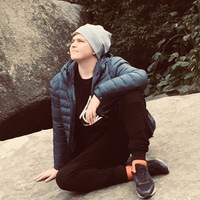
6. a) Complete the following passage by putting the verbs into the past tense. After the Second
World War, Akio Morita, the co-founder of Sony (1) joined (join) forces with a friend, Masaru Ibuka. Both men (2) __________ (know) a great deal about telecommunications, so (3) __________ (use) all their money, about £100, and (4) __________ (set) up a small engineering company, Tokyo Tsushin Kogyo. They (5) __________ (find) a small broken down building to use as a laboratory in Tokyo. There (6) __________ (be) so many holes in the roof that when it (7) __________ (rain), they (8) __________ (have) to continue working under umbrellas. Their first task (9) __________ (be) to decide what to make. They (10) __________ (not want) to make radios because of the competition from much larger companies. Instead, they (11) __________ (decide) to create an entirely new product, a tape recorder. They (12) __________ (succeed) in making a machine, but unfortunately they (13) __________ (not have) any tape, and they (14) __________ (not know) how to produce it. So they (15) __________ (start) to experiment, and (16) __________ (try) using a number of different materials. Finally, they (17) __________ (make) a breakthrough. They (18) __________ (cut) up strips of paper to make a reel, and (19) __________ (paint) them with a magnetic material that they (20) __________ (heat) on a frying pan in their small room. It (21) __________ (work), and they gradually (22) __________ (improve) the process. In 1950, they (23) __________ (begin) trying to sell their revolutionary machine. And the rest is history! b) Ask ten questions to the text. c) Retell the text. 0
0
 0
0
Ответы на вопрос
 Внимание! Ответы на вопросы дают живые люди. Они могут содержать ошибочную информацию, заблуждения, а также ответы могут быть сгенерированы нейросетями. Будьте внимательны. Если вы уверены, что ответ неверный, нажмите кнопку "Пожаловаться" под ответом.
Внимание! Ответы на вопросы дают живые люди. Они могут содержать ошибочную информацию, заблуждения, а также ответы могут быть сгенерированы нейросетями. Будьте внимательны. Если вы уверены, что ответ неверный, нажмите кнопку "Пожаловаться" под ответом.

2.knew
3.used
4.set
5.found
6.were
7.rained
8.had
9.was
10.didn't want
11.decided
12.succeeded
13.didn't have
14.didn't know
15.started
16.tried
17.made
18.cut
19.painted
20.heated
21.worked
22.improved
23.began
 0
0
 0
0

Passage Completion:
After the Second World War, Akio Morita, the co-founder of Sony (1) joined forces with a friend, Masaru Ibuka. Both men (2) knew a great deal about telecommunications, so (3) they used all their money, about £100, and (4) set up a small engineering company, Tokyo Tsushin Kogyo. They (5) found a small broken-down building to use as a laboratory in Tokyo. There (6) were so many holes in the roof that when it (7) rained, they (8) had to continue working under umbrellas. Their first task (9) was to decide what to make. They (10) did not want to make radios because of the competition from much larger companies. Instead, they (11) decided to create an entirely new product, a tape recorder. They (12) succeeded in making a machine, but unfortunately, they (13) did not have any tape, and they (14) did not know how to produce it. So they (15) started to experiment, and (16) tried using a number of different materials. Finally, they (17) made a breakthrough. They (18) cut up strips of paper to make a reel, and (19) painted them with a magnetic material that they (20) heated on a frying pan in their small room. It (21) worked, and they gradually (22) improved the process. In 1950, they (23) began trying to sell their revolutionary machine. And the rest is history!
Ten Questions:
1. Who was Akio Morita? 2. Who did Akio Morita join forces with after the Second World War? 3. What did Akio Morita and his friend use their money for? 4. Where did they set up their small engineering company? 5. What did they use as a laboratory? 6. What did they have to do when it rained in the laboratory? 7. Why didn't they want to make radios? 8. What did they decide to create instead? 9. What was their first task? 10. How did they make a breakthrough in producing tape?
Retelling the Text:
After the Second World War, Akio Morita, the co-founder of Sony, joined forces with his friend Masaru Ibuka. Both men had extensive knowledge of telecommunications and decided to use all their money, about £100, to set up a small engineering company called Tokyo Tsushin Kogyo. They found a small broken-down building in Tokyo to use as their laboratory, but it had so many holes in the roof that they had to work under umbrellas when it rained. Their initial plan was not to make radios due to competition from larger companies, so they decided to create a tape recorder instead. However, they faced challenges as they didn't have any tape and didn't know how to produce it. Through experimentation, they eventually made a breakthrough by cutting up strips of paper to make a reel and painting them with a magnetic material. They heated the reels on a frying pan in their small room, and it worked. They continued to improve the process and in 1950, they began trying to sell their revolutionary machine. And the rest, as they say, is history!
 0
0
 0
0
Топ вопросов за вчера в категории Английский язык
Последние заданные вопросы в категории Английский язык
-
Математика
-
Литература
-
Алгебра
-
Русский язык
-
Геометрия
-
Английский язык
-
Химия
-
Физика
-
Биология
-
Другие предметы
-
История
-
Обществознание
-
Окружающий мир
-
География
-
Українська мова
-
Информатика
-
Українська література
-
Қазақ тiлi
-
Экономика
-
Музыка
-
Право
-
Беларуская мова
-
Французский язык
-
Немецкий язык
-
МХК
-
ОБЖ
-
Психология
-
Физкультура и спорт
-
Астрономия
-
Кыргыз тили
-
Оʻzbek tili





















